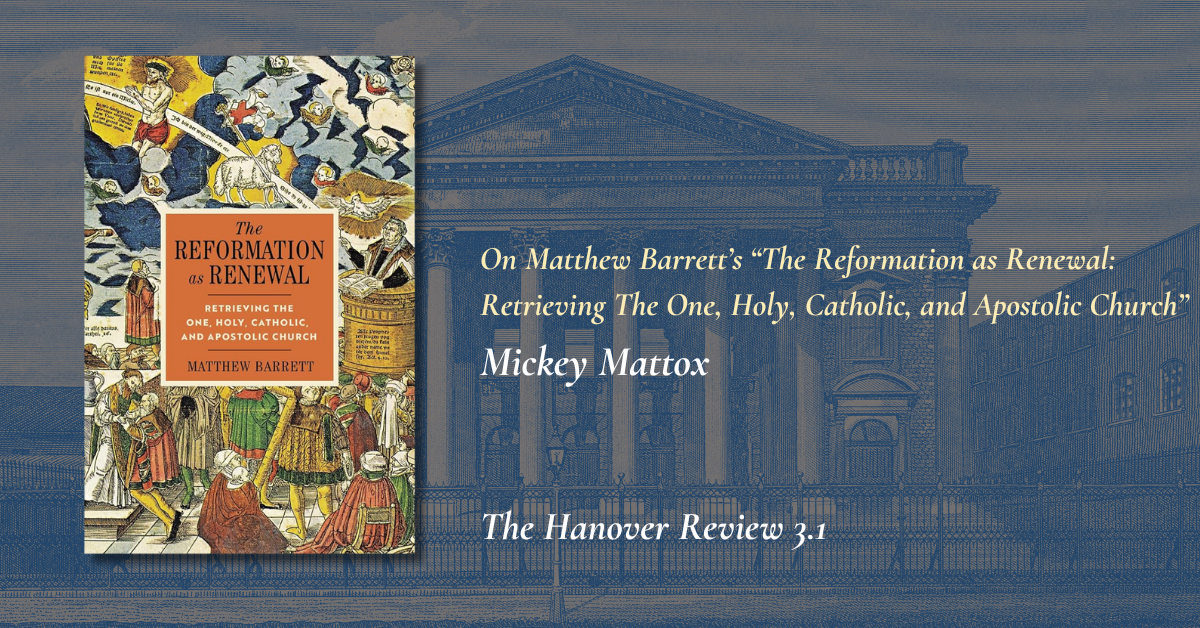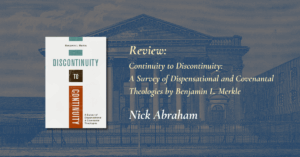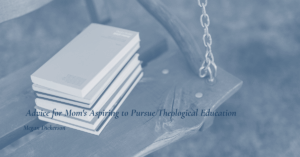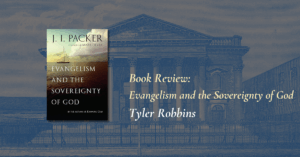Note: This is the online version of an essay from the Hanover Review 3.1 on the Reformation as Renewal Symposium. Print copies are available here and full digital copies of the issue are available here. Full details about the symposium can be found here. More information about the Hanover Review is found here.
Note to the Reader: In what follows I use the upper-case Catholic to refer to the Catholic Church and members of it. Many Protestants see their own traditions as catholic or evangelical catholic. To that extent some would contest the identification of the Catholic Church as catholic full stop, preferring instead to refer to it as “Roman” Catholic. I refer to these Christians and their churches here with the standard, if not unproblematic, convention of the lower-case catholic, recognizing that churches that trace their origins to the reformations of the sixteenth century often identify themselves as evangelical catholic.
1. Introduction
It is a pleasure to have been asked to comment briefly on this fine book. Given that the book ranges so widely, I have chosen to focus my comments on just a few areas in which I have some expertise, especially Martin Luther as a later medieval man and ecumenical theology. The latter of these two areas brings us to the vexed issue of “catholicity.” What does this word mean and who gets to use it? My comments in this area will reflect my own hybrid ecclesial identity as a member of the Catholic Church. Mine was a late-in-life “conversion” into the Catholic Church, one that came not as an about turn, but as a movement forward, as I saw the matter, in faith and with gratitude for the many gifts I had received through a pilgrimage that included a childhood spent among the Southern Baptists and a long stretch as an adult in the Lutheran churches. I take Barrett’s work as an effort to underscore and fortify the catholicity of his own ecclesial tradition. With that effort I am sympathetic.
Perhaps somewhat eclectically, as a Luther scholar and Reformation historian with interests in Christian ecumenism I find in this book answers to a series of ecumenical questions that have loomed large since the sixteenth century, and perhaps especially during the ecumenical heyday that followed Vatican II. Granting for the sake of argument that the reformations of the sixteenth century were justified, even necessary, were the results of those reformations good for the c/Church(es)? Did they prompt a recovery or renewal of the Gospel of Jesus Christ? Did the Protestant reformers have the Spirit?
Barrett joins company with such scholars as Scott Hendrix in offering theologically nuanced and enthusiastically affirmative responses to such questions. Hendrix (Recultivating the Vineyard) wanted to draw attention to the Reformation as an era of Christianization (cultivating the vineyards of faith), and thus as a crucial movement by means of which Christian faith and practice were imprinted more deeply upon the ways of life characteristic of the Protestant nations and territories in western Europe. Barrett has gone much further, describing in great detail how the Protestant reformers recovered authentic catholic faith and practice in such a way as to incorporate the best of the medieval tradition— including the “sounder scholastics” of the Middle Ages, e.g., Thomas Aquinas—while at the same time rejecting false developments that had occurred in the western church after the seventh ecumenical council and up through and including Lateran IV. The Reformation(s) swept away such false accretions as appeals to a papal monarchy, indulgences based on a treasury of merits, an over-reliance on canon law and church traditions as opposed to Holy Scripture, salvation through meritorious deeds of love done in a state of grace, a false ontological account of the mystery of the sacraments, and the hierarchical priesthood. The several Protestant churches and ecclesial communities that emerged out of the ecclesial maelstrom of the sixteenth century, so the argument goes, had by and large reformed these practices and returned—to be sure with some important intra-Protestant differences as reflected in the various catechisms, confessions, and the like—to the properly catholic faith. To that extent, Barrett argues, the Reformation was a very good thing, indeed so much so that to be authentically Protestant is to be “catholic” even if “not Roman.”1Matthew Barrett, The Reformation as Renewal: Retrieving the One, Holy, Catholic, and Apostolic Church (Grand Rapids: Zondervan, 2023), 883.
2. Barrett’s Harvest
I find much to praise in this effort. Of course, it stands to reason that there should be much to praise simply because the book is, well, massive. But it offers much more than the occasional insight. This is excellent work in the long history of theology, and it promises to make a significant contribution to reminding the Protestant churches of their deeply catholic roots. In that way, it also fosters a deeper sense of shared identity and dialogue not only among evangelical catholic Protestants but with “Roman” Catholic and Orthodox Christians as well.
What is perhaps most impressive about the book is simply the Herculean efforts that must have been required to produce a work that ranges so widely across the history of (mostly) western theology, situating the Reformation(s) of the sixteenth century within the broadly catholic traditions of faith whose roots extend back to Israel and the ancient Greeks and continue through the long Middle Ages. The author offers a spirited and convincing assertion of the broad catholicity of the Protestant Reformations in (almost) all their versions. With that, his plea is for Protestant fidelity today through the retrieval of evangelical catholicity. In an era of Christian fragmentation and faithlessness on all sides, one can only wish churchmen like Barrett success. His refutation of standard accusations laid at the feet of the Reformers, especially that they were driven by forms of nominalism and voluntarism that severed “the tapestry of participation,” is convincing. With that in mind, he works to retrieve authentic Protestant tradition and by so doing seeks to help others recognize the differentiated catholicity that has characterized the divided Protestant churches from the beginning.
Thinking broadly about the scholarly context that made Barrett’s work possible my own thoughts turn to the great Heiko Oberman, who probably trained more Reformation scholars than anyone before or since. From the early ‘60s to 2001, a generation of students at leading universities in the United States and Germany (Harvard, Tübingen, Arizona) imbibed Oberman’s method, including such well known scholars as Steven Ozment, Scott Hendrix, David Steinmetz, Timothy George, and dozens more. Oberman and his students appear prominently in the main text and footnotes of this book. Indeed, one would not be entirely mistaken to take as the leitmotif for Barrett’s work Oberman’s own programmatic attempt to understand the Reformation in its long catholic context. Oberman himself was both a Reformed churchman and a scholar, and in service to both these vocations he wanted to take another look at the later Middle Ages, eschewing the traditional view of it as a time of decline and decay. To the contrary, Oberman argued, this was a time of theological harvest. We should receive and appreciate it on its own terms, and as the background that helps us understand the theological dynamism of the sixteenth century. We should adopt, he argued, a “cradle view” of history, according to which we find the “birth pangs” of sixteenth century reform in the vitality of later medieval Catholic life and thought. I mean it as a high compliment when I say that Barrett’s Reformation as Renewal could be read as, well, a very long and significant updating and extension of the work Oberman and his students have done across the last sixty-plus years. Barrett offers an impressively wide-ranging and informative review of religious thought from Plato to Aristotle and the so-called Neoplatonists, and from there into the thought worlds of Augustine and Aquinas. This is extraordinary work. In some ways it is reminiscent of the old textbooks of the history of doctrine (e.g., Reinhold Seeberg), but this one excels many of those older tomes by telling the story of the development of catholic and evangelical theology in engaging and lucid prose. Along the way one finds what may be the best brief-ish review in the English language of the sorts of ontological thinking and theological reflection that led the Christian faith tradition to center its account of salvation in the notion of participation. This lengthy review of the Platonist and Neoplatonist development of ideas about God and the good is hugely impressive. Would that this could be made required reading for candidates for ordination into the churches’ public ministry, both Protestant and Catholic. Shared familiarity with Barrett’s retrieval of Thomas’s thought in its long catholic context could provide a common language and so improve mutual understanding between separated Christians on all sides.
The same can be said for much of what follows. The depth in which Barrett explores such important medieval figures as Duns Scotus and Gabriel Biel, for example, provides an invaluable resource for all who want to get down into the details of many classical theological arguments. Questions about Scotus revolve around his voluntarism and univocal predication regarding God and creation. These issues have engaged scholars for a good long time now, with special impetus provided by the controversial works of John Milbank and Brad Gregory. While some scholars have argued for the revolutionary consequences of Scotus’s thought, and of the sort that somehow made the modern world, Barrett more judiciously finds Scotus’s central ideas significant but hesitates to rush to the conclusion that such distant theological episodes led to secularization and so produced the modern world. At the same time, he argues that the impact of these ideas, including his notion of “contra- causal freedom,” was magnified by the later work of William of Ockham. Combined, he finds that Scotist and Ockhamist trajectories of thought proved corrosive not only for classical theism but also for the theology of participation as it had been crafted by St. Thomas. In this way, Barrett here echoes Milbank’s findings.
Similarly, when he examines the many decades-long controversy regarding Biel’s doctrine of grace, human freedom, and merit, Barrett carefully parses the work of Heiko Oberman and then sets forth criticisms of Oberman’s view as found in some of the later works of Alister McGrath. Here Barrett’s weighing of the relative merits of the arguments offered by these two—Oberman convicts Biel of semi-Pelagianism, while McGrath acquits him—is even-handed and insightful. He argues that McGrath’s argument against taking Biel’s doctrine as Pelagian does not quite wash and that Oberman’s view still makes better sense of Biel’s work, both in its structure and in its effect on readers. The upshot of this controversy is significant not only in its own right, but even more so because of the impact Biel had on Martin Luther and his protest “against scholastic theology.” Catholic scholars, too, I would hasten to add, have long recognized the authentic catholicity of Luther’s protest contra Gabrielem. Here as elsewhere, Barrett operates more in the mode of the systematic theologian than of the historian. Rather than digging through the sources himself, he takes up the findings of the best historical research and seeks to adjudicate between conflicting claims.
This also applies to his work on Luther. The book devotes nearly 200 pages to a review of Luther’s theology and efforts at church reform. The work here follows the main lines that have been sketched out in the standard Protestant secondary literature, drawing frequently on the work of such respected scholars as Scott Hendrix, Robert Kolb, Hans Hillerbrand, and Carl Trueman, with occasional appeals to David Steinmetz, Gerhard Forde, Steven Paulson, Euan Cameron, and Anthony Lane. A particular delight along the way is Barrett’s treatment of the portraits and woodcuts produced by the workshop of Lucas Cranach. Images played a powerful role in early modern publishing, particularly for those unable to read. This survey of Luther’s life and thought concludes with brief treatments of the late treatises against the Jews and the pope, which often veered into vitriol and violent polemic. Barrett writes here with a purpose, though of course it is a good one: to renew Protestant Christians in the evangelical catholicity out of which their movement was born, and in particular to reconnect that movement to the work of Thomas Aquinas. With this end in mind, the work on Luther is very helpful, even-handed, and informative.
3. Potential Areas for Greater Harvest
It would be unfair of me to fault a book of this heft for what the author did not say. Nor do I wish to do so. Instead, let me gently suggest just one missed opportunity. Martin Luther has more to contribute to evangelical catholicity. On the one hand, as Barrett so thoroughly reports, Luther and the Roman church of his day were locked in a terrible struggle. Luther’s achievement was to defend his Gospel and to develop a systematic critique of problematic teachings and practices in the later medieval church. Good. On the more constructive side, however, Barrett portrays Luther’s Gospel as deeply tied to a breakthrough understanding of justification as forensic and imputational. And so it was.
At the same time, Luther remained deeply indebted to some of the later medieval traditions that had enabled him to envision the believer’s union of faith with Christ as including both the sinner’s justification before God by grace through faith alone and a dynamic sense of the real indwelling of Christ in the Christian. Justification is thus both forensic and effective. The roots of the effective side of this teaching lie both in Scripture and in Luther’s appropriation of some of the mystical language and metaphysical elements found in medieval theology and spirituality. His teaching on these matters has been the subject of intense debate and research over the last 30 years or so. Barrett follows reliable guides in restricting Luther’s doctrine to the forensic. Very much to his credit he also presents Luther warts and all, but it is a conventional Luther nevertheless, one who by my lights is read through a predominantly Lutheran identity lens, so to speak, which is focused on the imputation of Christ’s righteousness to the believer as the decisive difference. Given that, as Luther himself admitted, Augustine was not very clear on imputation, was this different teaching also catholic?
To answer that question it would be helpful to address some of thearguably more traditional catholic elements in Luther’s doctrine of justification. Unless the intention is simply to repristinate the forensic moment, then Barrett’s broader purposes could have been furthered by a positive appropriation of some of the work of such well known research scholars as e.g. Risto Saarinen, Volker Leppin, Christine Helmer, Dennis Bielfeldt, Sammeli Juntunen, and Knut Alfsvåg, whose works have underscored the evangelical and medieval catholicity of Luther’s thought, noting, for example, the centrality of Luther’s trinitarian teaching, which, alongside justification, he could also (and, alright, somewhat confusingly!) identify as the “chief article” of the faith. More to the present point, they have helped us recognize that an affirmation of the believer’s participation in God is abundantly present in Luther’s theology, as one sees for example in the great Genesis lectures.
It is no secret, of course, that research on theosis/divinization in Luther’s theology originated many decades ago in the Finnish Lutheran/ Russian Orthodox ecumenical dialogues, out of which came the breakthrough study of Tuomo Mannermaa entitled Christ Present in Faith. The ecumenical origins of this research by no means impugns the effort. To the contrary, Mannermaa’s controversial claims led to a period of intense research in the sources, and with that to new understandings of Luther’s doctrine of justification. This project is ongoing. And while the Finnish emphasis on theosis—reflecting its origins in Lutheran-Orthodox dialogue—has gotten all the headlines, a quiet revolution on Luther and medieval Aristotelianism (made possible by the groundbreaking study of Theodor Dieter, Der junge Luther und Aristoteles) has brought Luther and philosophy back into the mainstream of Luther research. For example, Christine Helmer’s online “Luther and Logic” research group is busily reevaluating Luther’s position within medieval streams of thought—here, too with roots in Oberman—and particularly on his reception of later medieval philosophy. Work of this kind is of its very nature ecumenical, which, at least as it seems to me, can be said of Barrett’s work as well.
As a Baptist theologian, he understandably wants to claim and reclaim the great catholic tradition as his own, in part by connecting vitally to the classic streams of Reformation thought, particularly Reformed scholasticism, a field in which Richard Muller’s fingerprints are to be found nearly everywhere. Muller’s achievements, and they are many, include the extension of Oberman’s so-called continuity thesis to seventeenth century Protestant orthodoxy, a project which is intrinsically ecumenical insofar as it seeks to demonstrate the straight-up catholicity of classical Reformed theology, i.e., the continuity between mainstream Protestant thought and the scholastic theology of Thomas Aquinas and the “sounder doctors.”
With Barrett’s efforts at retrieval in mind, I want to suggest that evangelical catholicity could also be informed by the best of the post- Vatican II Catholic retrieval and reconsideration of Luther’s thought. And precisely here we find another way in which Barrett’s outstanding work might be further amplified. Catholic Luther studies, which, yes, have been somewhat muted in recent years, nevertheless opened the way for a further Catholic recognition not only of the catholicity of Luther’s initial protest against late medieval nominalism, but also of his mature faith, teaching, and practice. Otto Hermann Pesch, Peter Manns, Erwin Iserloh, Jared Wicks and company established their reputations as scholars and churchmen by helping to recover the medieval and catholic Luther. Their work amplified a widely shared sense that the Council of Trent was unable, or unwilling, to give Martin Luther and his theology a fair hearing. In seeking to redress that failure, generations of research scholars have labored hard in the sources, Catholics with Protestants working side by side.
Of course, the sense of shared purpose and common identity that once animated catholic Luther research across denominational lines has faded. Indeed, ours has been declared an ecumenical ice age. But works like The Reformation as Renewal suggest just how far from true that really is. Traditional Christians of all kinds are looking to ressourcement (yes, I mean that as a verb) from our common heritage. Barrett’s is one of the best and most persuasive works of this kind I have read. Bringing Catholic voices into the conversation about Luther—by which I mean granting informed Catholic scholars a role in the narration of the Luther event in toto—would only help others appreciate the broad spectrum of Luther’s own catholicity. It reminds us, too, of the catholic depth of the Christian identity we share. The Catholic Church, too, as theologian Michael Root has noted, suffers a “woundedness,” one that is signaled in the classic phrase “separated brethren.” Catholics may assert that in the Catholic Church there is a fullness, but not in such a way as to be unable to recognize how that fullness could be enhanced by the full incorporation of the separated brethren.
4. Conclusion
Some might take Barrett’s insistence on Protestant catholicity as made at the expense of “Roman” claims to be the Catholic Church. I do not. To the contrary, his complaint is well taken, and it echoes similar concerns expressed by many Protestant theologians ( Jerry Walls, Kevin Vanhoozer, etc.). As a Catholic, I would not at all wish to contest Protestant claims to catholicity. In fact, as suggested in my remarks about Luther above (which I could extend in some ways to Calvin as well), I would want to affirm and even help to extend them. Even with that ecumenical good will in mind, however, one might reasonably ask whether by identifying itself publicly as “The Catholic Church” Rome does not in fact mean to assert an ecclesial hegemony over competing claims to catholicity. Do Catholics believe that the catholic brand has been licensed exclusively to Rome?
As Matthew Levering has recently noted, the definitive work of the late Avery Cardinal Dulles (a Protestant convert to Catholicism) showed that the understanding of catholicity in the Catholic Church is centered in a visible unity that is to be found both at the Lord’s Table and, in a special and necessary way, in the universal and visible ministry of the bishop of Rome. Catholic catholicity, we might say, is centered in visible forms. The argument between Catholic and Protestant theologians today need not pertain to whether catholic elements are to be found, even prominently, in classical Protestant doctrine and practice. Such elements are to be found, and we Catholics should rejoice in that. Thus, our arguments with the separated brethren should be oriented toward what we can or cannot do together, i.e., to gather at one table and in one church, visibly united. Papal primacy, on the Catholic account, is not an end in itself. Instead, it is a gift to the Church that is given to serve and help conserve her in unity, holiness, catholicity, and apostolicity. Thus, we Catholics find a fullness in the Catholic Church. In view of the Church’s own woundedness, however, and in recognition that there are many of signs of the Spirit at work in the Protestant communions, Catholics also long for the day when the wounds of division have been healed so that we ourselves can participate even more completely in a fullness that, to be sure, properly belongs to Christ alone, when we encounter him together in the one, holy, catholic, and apostolic church.
With that in mind, I want to suggest that Barrett’s work here, though it firmly rejects any exclusive Catholic claims to catholicity, in fact helps open the way to further dialogue and deeper unity between Catholics and, dare I say it, their separated evangelical catholic brethren. “Roman” Catholics and evangelical catholics, together? Yes. May the Lord of the church make it so.
5. Postscript
Nomenclature is a challenge, especially when one wants to claim catholicity. Similar problems, however, are also to be found on the Protestant side. Do Baptists or Assembly of God Christians, for example, want to wear the “Protestant” label that goes back to the protest of some German princes against the edict of the Diet of Speyer in 1526? For that matter, do Lutherans, Episcopalians, or, and perhaps more ironically, the Reformed? Rather than Protestant, church bodies seem to choose words that speak to their origins or central values, Lutherans for example after Luther, Reformed after the evangelical reforms of the sixteenth century, the Anglican churches after their origins in England, Baptists after a central practice of their faith, and so on. This reminds us that names and labels have histories. They tell a story. But what do those stories mean now? Luther was right to protest for the catholicity of his movement. But almost all the bishops in his day chose to remain in communion with the bishop of Rome. Historically, Catholic and Protestant were names that were accepted on both sides, names that told one party’s story as over against the other. With that in mind, Catholics can also recognize that we tell our story when we call ourselves Catholic, a story that includes necessarily the crucial elements of visible catholicity mentioned above.
Where does that leave us today? Catholic vs. Protestant to the bitter end? Could my side entertain a name change? For the moment, at least, I’d best leave that question to the ecclesial authorities toward whom I have an obligation of obedience. For the moment, at least, the Catholic Church is what it is. But nothing prevents other churches and ecclesial communities from choosing to incorporate “catholic” in their name as a way to tell their story. Perhaps that would even be a good thing, at least in so far as it suggests the need to keep the conversation going about just exactly what it means to be catholic.
Perhaps here again Luther could help. In the Smalcald Articles (1537), Luther began with a quick review of trinitarian doctrine and Christology (including the perpetual virginity of the Virgin Mary), noting that “concerning these articles there is no dispute.” And that, as they say, is not nothing. All who hold those articles hold the catholic faith. But of course there is much else on which we so far disagree. With both the agreement and the disagreement in mind, our task as separated Christians is to live out the unity we already enjoy in our common witness to Jesus Christ as incarnate Savior and Lord and the one God in three eternal persons, and to work for the visible unity that at present eludes us. With that hoped-for unity in mind, Barrett’s The Reformation as Renewal reveals some surprising and often unrecognized ways in which we are already one. With that in mind we should be encouraged in our pursuit of the goal of visible unity in the one, holy, catholic, and apostolic Church. Who knows what the Spirit may give?
Author
-
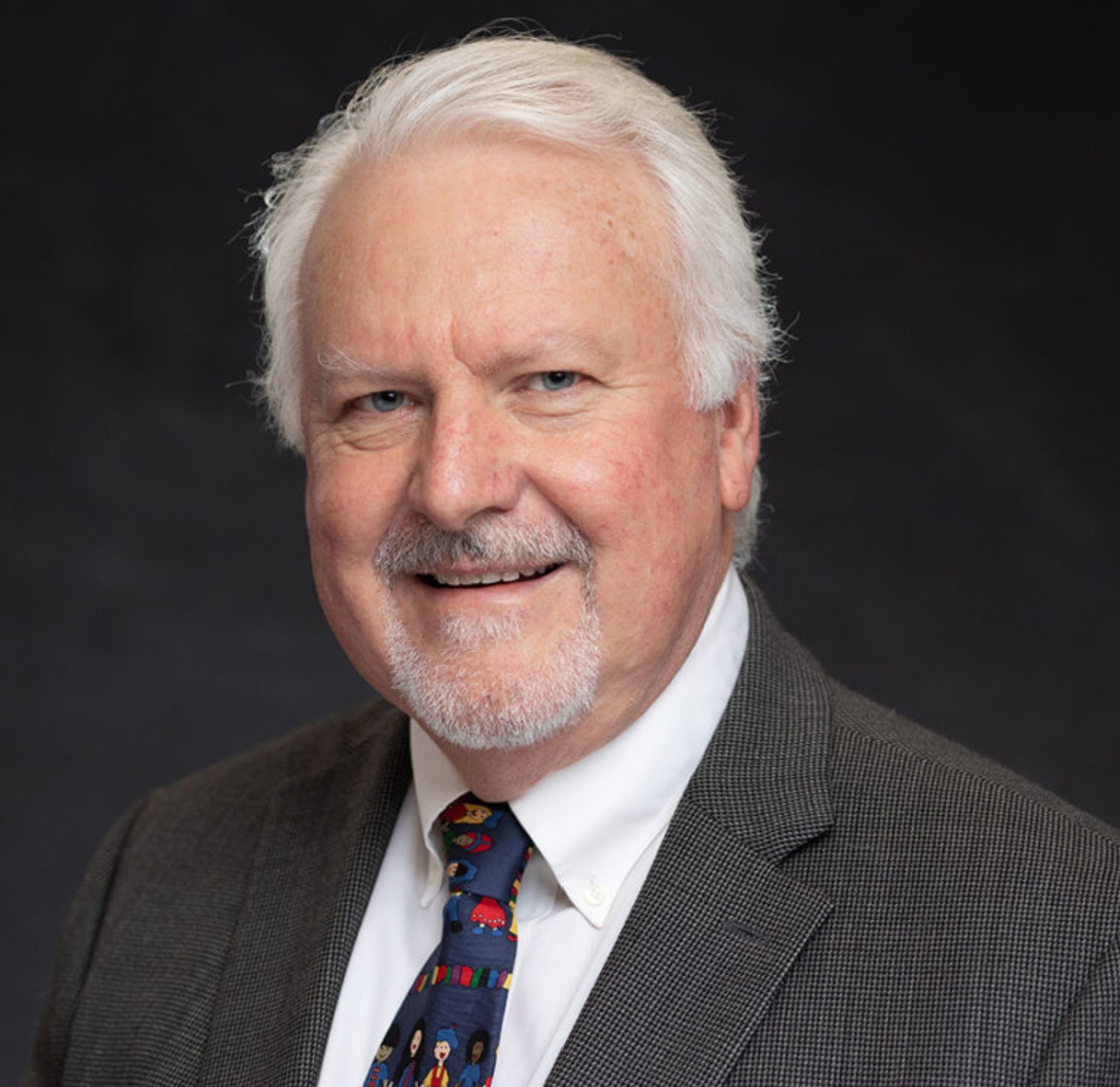
Mickey Mattox (PhD Duke University) is a Catholic scholar of Martin Luther at Hillsdale College with interests in the history of biblical interpretation and ecumenical theology. His books include An Exposition of Genesis (Marquette, 2013) which offers the Latin text with translation of Johannes Oecolampadius's Exposition of Genesis 1-3, and Defender of the Most Holy Matriarchs: Martin Luther’s Interpretation of the Women of Genesis in the Enarrationes in Genesis, 1535-1545 (Brill, 2003), which provides an in-depth analysis of the female figures in the book of Genesis, as read by Martin Luther. Most recently, he co-edited Luther at Leipzig: Martin Luther, the Leipzig Debate, and the Sixteenth-Century Reformations (Brill, 2019) with Richard J. Serina and Jonathan Mumme. This book offers twelve chapters examining the history and theology of the Leipzig Debate (1519), a major event which pitted Martin Luther against Johann Eck.
View all posts
